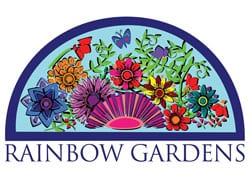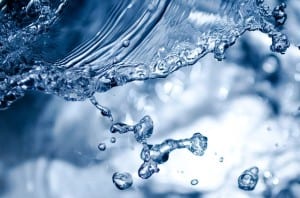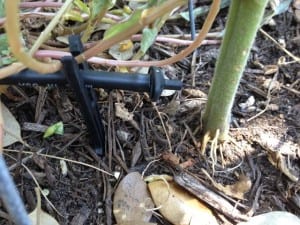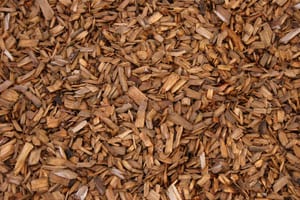Water Conservation Tips
Water, water, everywhere, and not a drop to drink. Do you think your plants are thinking this at times? Guess what? They are! We, with our generous hearts, turn the sprinklers on in our gardens and believe we are giving our plants what they need. And they do need watering, don’t misunderstand this, but what they need is to be watered correctly. Established plants need deep, infrequent watering, while new plantings need shallow, frequent watering. But what they both need is wise watering. You will find that by watering wisely, you will provide the most benefit to your plants, while conserving your water and your energy.
(It is ok to use your sprinkler system, but follow the SAWS guidelines and regulations)
As we head out of the second month of summer and into the third, it looks like the temperatures have no plans to stop climbing up into the triple digits . SAWS will be out and about making sure we are all abiding by their water restriction policies. (And yes, they really do issue fines. We’ve seen it happen.) Remember back when we “gently suggested” (read as strongly urged) that you plan ahead and work on your water conservation techniques when the weather was cooler? Well, if you didn’t do it then, you can still do it now. Just slather yourself with sunscreen, don a floppy hat, bring out a towel to wipe your sweaty brow, load up on water, and jump out there and get it done (preferably in the cooler morning or later evening hours). Water conservation doesn’t have to be an overwhelming task to undertake. You could choose to set up a fairly inexpensive drip irrigation system, or you can opt for a few other tweaks here and there to save on water and get your plants through the “dog days of summer”.
Drip irrigation:
(Drop by drop your plants get the water delivered right where they want it)
This system basically does exactly what its name states. It slowly drips water into the soil by the roots of your plants. You set up a system of drip hoses with valves and tubing and you can really target right where you want the water to be directed. This means you aren’t watering the weeds, the foliage of your plants (helping to prevent disease), and you aren’t wasting water with run off or watering the space between your plants where it is not necessary. You will save time and your sanity by not having to stand out in the scorching sun, watering your plants with your hose or watering cans.
(An emitter points directly at the root of a plant)
You can visit a hardware store and find all types of irrigation systems, from a beginner kit, to individual pieces. You’ll need to get yourself a filter, pressure regulator, and a timer. These are mentioned because they are sometimes not included in the beginner kits. Always choose a kit that you can add on to, because once you see how amazing this system works, you will want to continue it into most areas of your gardens. And you also want to be able to add on because as root systems grow and expand, your system must grow and expand along with them. But what you really need to do is take a good look at your landscape and get a good idea of where you want your main hoses (or pipes) to run to and from (measure that distance so you know how much tubing to purchase), and how many emitters (the little tubes that shoot off of the main tube like caterpillar legs) that you need for each plant. You will find that your plants grow more quickly and produce better with drip irrigation. This is because the plants are getting consistent water at their roots. Combine this system with a good layer of mulch and then sit back and enjoy your cool air conditioner while your plants grow healthfully and happily.
Rain Barrel:
(A rain barrel waits patiently for a downpour.)
Does the word “rain” make you laugh? We do occasionally have some wonderful bouts of wetness coming down from the sky. Yes we do. Sometimes it seems like in San Antonio, it’s feast or famine when it comes to rain. Well, during those “feast” days you can stock up and save the rainwater in your rain barrels for the “famine” days that are sure to follow. Rain barrels are usually situated under downspouts from the roof or gutters, capturing the water that would normally be wasted running down the driveway. This water is stored in the barrel and can be used to water lawns and plants during dry spells. They usually have a hose connection attached to the barrel for ease of expressing the water. The water will be like any other non-potable water, meaning it is not safe to drink. However, it will be fine for your plants, even vegetable gardens, as long as the watering is under foliage down by the roots; and just remember to wash your vegetables in clean drinking water thoroughly before consuming.
Time of day and how you water:
(7-11 a.m. and 7-11 p.m. are the times you are allowed to use your sprinklers and sprinkler systems. )
There is a reason that SAWS sets a time that you are allowed to use your sprinkler system, and there is a reason we always suggest a time for watering as well. We are trying to give your plants the most benefit they can get out of their watering schedule. Watering in the earlier morning hours or later evening hours provides your plants the best opportunity to retain their moisture. For roses, watering at night may increase the risk of disease, so try to water roses in the morning. If you water in the heat of the day, you risk allowing most of that water to evaporate, leaving your plants still thirsty. Along with what time you water, you should also take care to pay attention to how you water.
(This plant would be much happier with that water around it’s root system)
If you were really thirsty and were only given a little splash of liquid on the top of your head that dribbled down to your mouth, you would probably not be very satisfied right? The same thing happens to your plants. Just like you would like a long, tall glass of water delivered directly to your mouth, your plants also want a deep, long, drink of water delivered directly to their roots. Dribbling water on top of their foliage does nothing but encourage disease. Take the time to water for a while, under the foliage, and saturate their roots. That drip system is starting to sound really good right about now isn’t it?
Shift your plants around:
(A Cat Whisker plant thriving with some reprieve from the afternoon sun.)
Do you have a lot of potted plants? They sure have needed a lot more water lately haven’t they? That is probably the one drawback to potted plants. The good news is that your potted plants are portable and you should be able to move them around to help you conserve a little more water. Some of those plants that you had out in the full sun in the springtime and earlier days of summer would probably love a little reprieve from the heat of the sun now. You can play around with them to see how they may do in an area that gets the morning/early afternoon sun and then some later afternoon shade, and you may find they thrive there with less water usage. Or try grouping pots together of different heights (odd numbers look best), and some of the taller potted plants may provide some shade for the shorter ones. Remember also, that the type of pot you choose differs with how they retain water and moisture.
Mulch:
(Mulch comes in a variety of textures and colors, so your sure to find something that suits you.)
One of the easiest and best ways to conserve water is to mulch your plants. This provides a barrier on the soil to prevent water from evaporating, keeps the soil cooler, and also helps to eliminate risk of disease from the soil splashing onto the foliage of your plants. Win, win, win! One of the best mulches available is pine bark mulch. It provides all the benefits of any other mulch, but goes a step further. As pine bark breaks down over time, it adds acidifying, organic matter to the soil. Add a layer to those potted plants to help hold in the moisture. When mulching trees, leave a little space between the trunk of the tree and the layer of mulch to prevent rot and disease from spreading up the trunk.
Xeriscape Plants:
(Red Yucca can take the heat and give you bright pops of color without sucking up your water)
And lastly, if you choose plants that don’t need that much water and can take the scorching heat, you are already a step ahead in the battle. Come take a look at our huge selection of xeriscape and drought tolerant plants. We carry a wide variety of plants that just don’t need that much maintenance when it comes to watering. You can have a beautiful, colorful landscape and still feel good about doing your part to conserve water. Click here to see our fact sheets on different types of xeriscape plants. (Scroll to to bottom of the fact sheets page.)
It really doesn’t matter which of the methods you choose to conserve water, we just hope you choose at least one of them. And as for the “dog days of summer”, remember that this too shall pass.
(Enduring the “dog days” of summer!)
This week’s Happy Gardener (Lisa Mulroy)











